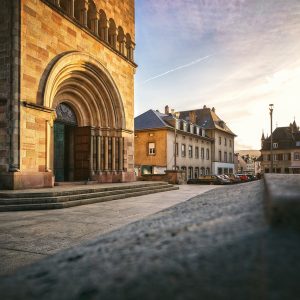The Timeless Elegance of the Brandenburg Gate: A Masterpiece of Architecture and History
$9.00
The watercolor depiction of the Brandenburg Gate beautifully captures the vibrant energy and historical essence of this iconic structure. The delicate brushstrokes and subtle hues bring to life the monument’s grandeur, highlighting the intricate details of its neoclassical design. The soft light filtering through the columns creates a serene ambiance, while the presence of people around the gate adds a dynamic and lively touch. This artistic representation not only celebrates the architectural brilliance of the Brandenburg Gate but also invites viewers to appreciate its significance as a symbol of unity and resilience in the heart of Berlin.
20 in stock (can be backordered)
The image of the Brandenburg Gate, rendered in a beautiful watercolor style, encapsulates the timeless elegance and historical significance of this iconic monument. Located in Berlin, Germany, the Brandenburg Gate stands as a symbol of unity and peace, having witnessed pivotal moments in history and serving as a testament to the resilience and spirit of the German people. This article delves into the architectural brilliance, historical context, and cultural importance of the Brandenburg Gate, highlighting why it continues to captivate and inspire visitors from around the world.
Architectural Brilliance
The Brandenburg Gate is a masterpiece of neoclassical architecture, designed by Carl Gotthard Langhans and completed in 1791. The gate, standing at 26 meters high and 65 meters wide, consists of twelve Doric columns forming five passageways, with the central passage originally reserved for royalty. The architectural design draws inspiration from the Propylaea, the gateway to the Acropolis in Athens, symbolizing the entrance to an important and revered space.
The intricate details of the gate are accentuated in the watercolor depiction, showcasing the play of light and shadow on its surfaces. The Quadriga, a chariot drawn by four horses and driven by the Roman goddess Victoria, crowns the gate, symbolizing victory and triumph. This majestic sculpture was added in 1793 and has undergone several restorations, reflecting the gate’s enduring significance.
Historical Context
The Brandenburg Gate has been at the heart of Berlin’s history, witnessing both moments of celebration and times of turmoil. Originally constructed as a symbol of peace, the gate became a site of significant historical events. During the Napoleonic Wars, the Quadriga was taken to Paris by Napoleon but was returned to Berlin after his defeat. The gate later became a symbol of division during the Cold War, standing adjacent to the Berlin Wall and becoming a poignant reminder of the separation between East and West Berlin.
The fall of the Berlin Wall in 1989 marked a turning point in history, and the Brandenburg Gate became a symbol of reunification and hope. Images of people celebrating the fall of the wall at the gate are etched in collective memory, reinforcing its status as a beacon of freedom and unity. Today, the Brandenburg Gate is a symbol of a united Germany and a testament to the nation’s resilience and commitment to peace.
Cultural Importance
The Brandenburg Gate is not only an architectural marvel and historical monument but also a cultural icon. It serves as a backdrop for numerous events, celebrations, and gatherings, reflecting its importance in the cultural fabric of Berlin and Germany. The gate’s image is instantly recognizable, symbolizing Berlin’s rich heritage and vibrant cultural scene.
In the artistic depiction, the watercolor technique captures the gate’s grandeur and the bustling activity around it, highlighting its role as a focal point for both locals and tourists. The blend of historical significance and contemporary relevance makes the Brandenburg Gate a dynamic symbol of Berlin’s past, present, and future.
The Role of Art in Preserving History
The watercolor image of the Brandenburg Gate exemplifies the role of art in preserving and interpreting historical landmarks. Artistic representations allow us to see familiar monuments through a new lens, appreciating their beauty and significance in different ways. The soft, fluid strokes of watercolor convey a sense of timelessness, emphasizing the gate’s enduring presence in Berlin’s landscape.
Artistic renditions also serve as a bridge between past and present, inviting viewers to reflect on the historical events associated with the monument while appreciating its current role in the city’s cultural life. By capturing the essence of the Brandenburg Gate, the watercolor painting helps to keep the monument’s story alive, inspiring future generations to learn about and appreciate its significance.
Conclusion
The Brandenburg Gate stands as a testament to the architectural brilliance, historical significance, and cultural importance of Berlin. This iconic monument has witnessed pivotal moments in history and continues to inspire and captivate visitors from around the world. The watercolor depiction of the gate beautifully captures its elegance and grandeur, offering a fresh perspective on a familiar landmark.
As a symbol of unity, peace, and resilience, the Brandenburg Gate remains an enduring icon of Berlin’s rich heritage. Through art and photography, we can continue to celebrate and preserve the legacy of this remarkable monument, ensuring that its story is shared and appreciated for generations to come. Whether experienced in person or through artistic representations, the Brandenburg Gate remains a powerful reminder of the enduring spirit of the German people and the timeless beauty of neoclassical architecture.
Be the first to review “The Timeless Elegance of the Brandenburg Gate: A Masterpiece of Architecture and History” Cancel reply
Related products
City and Architecture
Exploring the Urban Nightscape: A Glimpse into Modern City Living
City and Architecture
Timeless Elegance: Exploring the Architectural Marvel of the Institut de France
City and Architecture
City and Architecture
The Timeless Beauty of a European Street: A Journey Through History
City and Architecture
Exploring the Timeless Beauty of Siena, Italy: A Comprehensive Guide
City and Architecture
The Evolution of Architectural Mastery: An Ode to the Iconic Big Ben
City and Architecture
The Modern Marvel of Urban Architecture: A Skyscraper’s Grandeur
City and Architecture
Capturing the Essence of a Quaint European Village: A Watercolor Masterpiece












Reviews
There are no reviews yet.